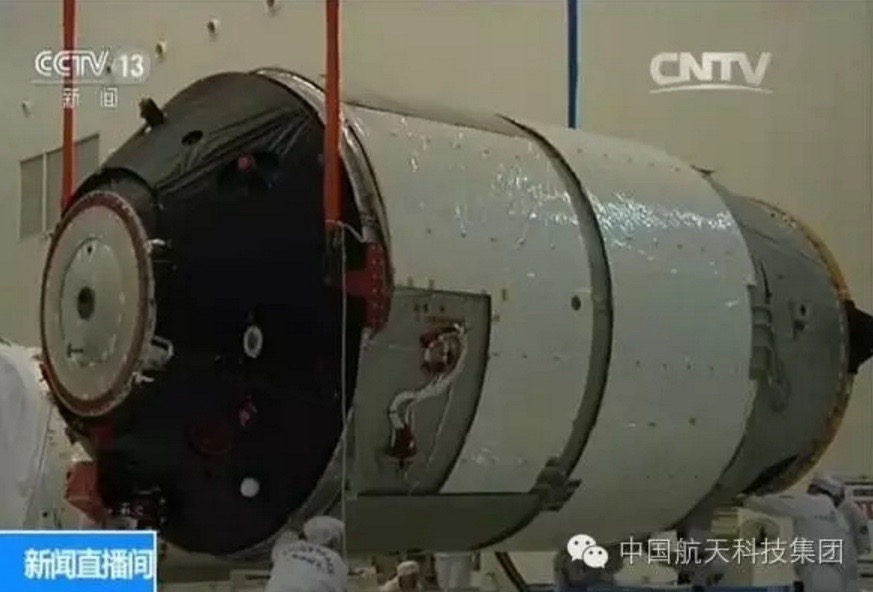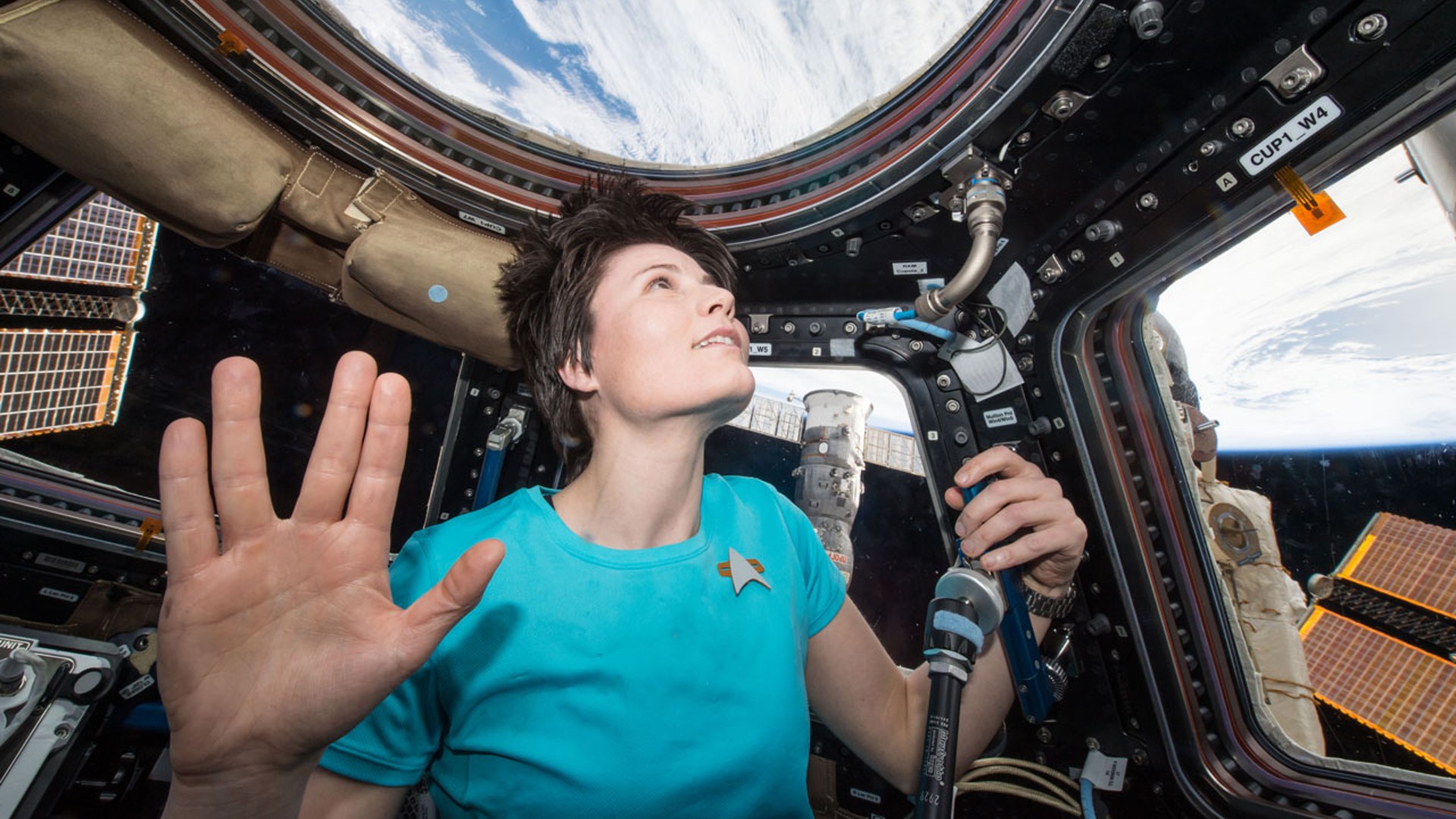China Readies Next 'Heavenly Palace' for Mid-September Launch

China is readying its next piloted space mission, a multifaceted undertaking that will lay the foundation for the country to build a space station in Earth orbit in the 2020s.
Both Tiangong-2 (whose name means "Heavenly Palace") and the piloted Shenzhou-11 spacecraft are now undergoing checkout at the Jiuquan Satellite Launch Center in northwest China.
Tiangong-2, which is scheduled to launch in mid-September, is a true "space lab" that will verify key technologies for building China's space station, according to its chief designer, Zhu Zongpeng. [Latest News About China's Space Program]
30-day mission
Zhu told China Central Television (CCTV) that Tiangong-2 is the country's first space lab in terms of its function. Compared with Tiangong-1, which launched in September 2011, Tiangong-2 has more facilities to ensure a comfortable stay for astronauts, including equipment for sending emails and receiving television programs from Earth, Zhu said.
A series of piloted Shenzhou spacecraft visited Tiangong-1 during its two-year operational lifetime. Those who lived onboard the vessel included China's first female astronauts, Liu Yang and Wang Yaping. (The now-empty Tiangong-1 should fall back to Earth soon, experts have predicted.)
Once Tiangong-2 is launched, Shenzhou-11will follow it into orbit in October, carrying two male astronauts on a 30-day mission. These astronauts, who have not yet been publicly identified, have been undergoing intense training, said the China Manned Space Engineering (CMSE) office.
More maturity
Zheng Wei, Shenzhou-11's assistant chief designer, told CCTV that "Shenzhou-11 has inherited all the tried and true features of its predecessors of Shenzhou-8, -9 and -10. It is therefore of confirmed stability, higher reliability and more maturity."
Breaking space news, the latest updates on rocket launches, skywatching events and more!
Launching Tiangong-2 and Shenzhou-11 in the planned one-two punch is a challenging proposition, mission officials have said.
"This is the first time for us to have two manned spacecraft and two carrier rockets at the launching site at the same time," Li Bing, chief engineer with the testing and launching station at the Jiuquan Satellite Launch Center, told CCTV. "We have to carry out the maintenance work simultaneously. Up until now, our work has been carried out smoothly to ensure the successful accomplishment of the two missions."
Li said up to 22 full-length technological renovations to the center have been made during the past three years "in order to forge a more favorable environment for launching manned spaceships in [the] future."
The linked-up Shenzhou-11 and Tiangong-2 duo will also receive a cargo ship next year, to implement on-orbit propellant resupply, Chinese officials have said. This was not done with any of the Tiangong-1/Shenzhou missions.
If all goes according to plan, inaugural use of the Tianzhou-1 cargo-resupply vessel to support Tiangong-2 operations will occur in the first half of 2017. That supply ship will be dispatched atop a Long March 7 rocket from China's new and sprawling spaceport, the Wenchang Satellite Launch Center, situated on the island of Hainan.
The Long March 7 went on its first test flight in June of this year, from Wenchang. On that maiden flight, the rocket carried mini-satellites, as well as an unpiloted, subscale test capsule for future piloted space missions in low Earth orbit and deep space. That 2.9-ton (2.6 metric tons) prototype module parachuted to a landing in Badain Jaran Desert in north China.
Verifying technologies
The orbit altitude of the Tiangong-2 is targeted for 244 miles (393 kilometers) above Earth, the same as that of China's future space station. That puts Tiangong-2 higher than Tiangong-1, which is "mainly aimed at verifying docking and rendezvous technologies for the space station," Zhu, the space lab's chief designer, told CCTV.
Other technologies will also be important, he said, including on-orbit propellant refueling, a key technology for the stable operation of the space station, Zhu said.
"We must collect gas from the fuel tank of the Tiangong-2 into a cylinder, so that a pressure difference will be formed to ensure that the propellant will be supplied from the cargo ship to the space lab," Zhu said, adding that precise and sealed connection of the resupply pipelines will also be ensured.
Overall, the objective of the upcoming Tiangong-2/Shenzhou flights is to carry out experiments for China's future space station, including technical experiments and those involving repair work. At least 14 experiments will be carried out in Tiangong-2, Chinese officials have said. [How China's First Space Station Will Work (Infographic)]
Long March 5, too
Also on tap later this year is the maiden blastoff of China's Long March 5. The country eventually plans to use that booster to launch space station modules into Earth orbit, support robotic sample-return missions to the moon and shoot a rover toward Mars in 2020.
In fact, the first Long March 5 rocket is currently being shipped from China's Tianjin Port to Wenchang, in a weeklong ocean voyage that began in late August. The maiden flight of the Long March 5 is expected by year's end.
The Long March-5 "has made breakthroughs in materials, crafts, equipment and facilities in our space programs," Wu Yanhua, deputy head of the State Administration of Science, Technology and Industry for National Defense, told CRIEnglish.com, the official English-language website of China Radio International.
"The successful development of the carrier rocket has greatly uplifted China's capability in spaceflight. It has led the way in carrier rocket development by serialization, stylization and modularization," Wu said.
Leonard David is author of "Mars: Our Future on the Red Planet," to be published by National Geographic this October. The book is a companion to the National Geographic Channel six-part series coming in November. A longtime writer for Space.com, David has been reporting on the space industry for more than five decades. Follow us @Spacedotcom, Facebook or Google+. Originally published on Space.com.
Join our Space Forums to keep talking space on the latest missions, night sky and more! And if you have a news tip, correction or comment, let us know at: community@space.com.

Leonard David is an award-winning space journalist who has been reporting on space activities for more than 50 years. Currently writing as Space.com's Space Insider Columnist among his other projects, Leonard has authored numerous books on space exploration, Mars missions and more, with his latest being "Moon Rush: The New Space Race" published in 2019 by National Geographic. He also wrote "Mars: Our Future on the Red Planet" released in 2016 by National Geographic. Leonard has served as a correspondent for SpaceNews, Scientific American and Aerospace America for the AIAA. He has received many awards, including the first Ordway Award for Sustained Excellence in Spaceflight History in 2015 at the AAS Wernher von Braun Memorial Symposium. You can find out Leonard's latest project at his website and on Twitter.
